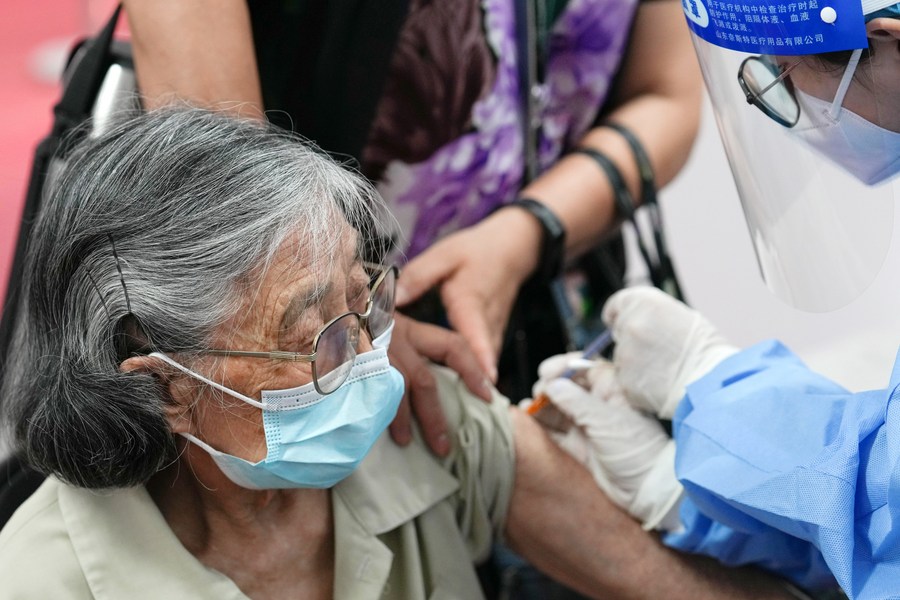
A medical worker injects a booster shot of COVID-19 vaccine for an 89-year-old citizen at Aoyuncun Subdistrict in Chaoyang District, Beijing, capital of China, July 13, 2022. (Xinhua/Ju Huanzong)
GUANGZHOU, Dec. 12 (Xinhua) -- China's leading epidemiologist Zhong Nanshan has urged a scale-up in vaccination efforts to inoculate more people with COVID-19 vaccine booster shots, especially with the Spring Festival travel rush coming soon.
A significant portion of people in China have already been vaccinated against COVID-19, and getting boosted is the best protection during the new phase of the anti-virus fight, Zhong told Xinhua in an exclusive interview on Friday.
"Preparations need to be beefed up. I suggest those planning to travel back home get a booster shot so that, even with COVID-19 infection, they don't become seriously ill," he said.
It usually takes two weeks for a booster to take effect, according to Zhong. "This would be of great help in preventing large-scale transmission during the mass migration of people in the Spring Festival travel rush," the epidemiologist said. The 2023 Spring Festival falls on Jan. 22.
There is a pressing need to step up vaccination efforts across the nation, he noted, asking seniors and people with underlying health conditions in particular to get vaccinated. "If you have received two doses of inactivated vaccines, you will need another dose to be boosted."
Zhong called for the full vaccination of children to protect schools and students, saying this is essential for resuming in-person schooling.

Zhong Nanshan attends a press conference on epidemic prevention and control work in Guangzhou, south China's Guangdong Province, March 18, 2020. (Xinhua/Lu Hanxin)
Asked about the recent spike in infections, Zhong explained that the Omicron variant has been developing, evolving and mutating rapidly, and is highly transmissible.
The Omicron subvariants that are now predominant in China are spreading fast, and under such circumstances, it is very difficult to entirely cut off the transmission, Zhong said.
But on the other hand, he said, Omicron has become significantly less pathogenic, with the mortality rate recently falling to around 0.1 percent, about the same as that of influenza.
Zhong noted that Omicron is still far more transmissible than flu.
In most cases, patients do not need to go to a hospital and can stay at home, according to Zhong.
"However, they need to keep watching their symptoms and see a doctor if the high fever does not subside in a couple of days," he said. ■












